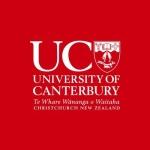UC using maths to predict cancer cell behaviour

The behaviour of cancer cells can be understood by the use of quite sophisticated mathematics. This approach is helping scientists understand the progression of cancer and to quantify the effects of treatment, a University of Canterbury (UC) mathematics Professor David Wall said today.
Mathematical modelling has been used in cancer research for many decades and every day progress is made towards solving the challenging problem facing society, he said.
``Multidisciplinary collaboration is essential in cancer research. Here at UC, in collaboration with the Auckland Cancer Society Research Centre (ACSRC), we are applying mathematical modelling to contribute to the treatment of skin cancer, which is particularly prevalent in New Zealand and Australia. We are also developing tools for detecting vital cancer cell population behaviour for biologists and clinicians who deal with various cancer types,’’ Professor Wall said.
``Our research focuses on modelling the dynamics of cancer cell populations that have been exposed to cancer treatment, such as irradiation, chemotherapy or a combination of both.
``We also model cancer cell populations that have not been exposed to any cancer treatment. This modelling helps to provide a better understanding of how cancer grows and can be used to predict the most effective cancer treatment option.
``ACSRC has provided us with experimental data on melanoma cell lines, or cancer cells sourced from patients that have been artificially grown in a lab. These cancer cell lines grow and divide much faster than cancer cells in a human body. Therefore, the effects of various cancer treatments applied to them can be identified mush faster.’’
He said the cell populations, when not exposed to any cancer treatment, exhibit exponential structured growth that could be mathematically expressed with some elegant equations. Along with UC postgraduate student Liene Daukste, he was working with mathematical models that described the physical structure of cancer cell populations. This was enabling them to visualise the underlying foundation of larger cancer cell populations.
Together they had developed a set of tools or shortcuts for biologists via mathematical modelling, especially in areas where effective experimental observations could not be made. The mathematical approach often provided a framework for understanding cancer cell population kinetics, such as the behaviour of cancer tissue that was sustained by a minor population of proliferating stem cells.
``The challenge that arises in our research is to create models that would use the experimental data available without needing extra, often experimentally unobtainable, information. These sorts of issues are overcome by working closely with biologists, and adjusting mathematical models, when new information or constraints are introduced to the formulation of the problems.
``New theories and conceptually different approaches to mathematical modelling of the cancer cell population or tumour growth are published every day. It is always rewarding to participate in workshops and conferences that join biologists, clinicians and mathematicians under one roof.
``Further work includes an extension of our mathematical models to analysis of cancer cells obtained from biopsy and will hopefully be a great help in choosing a preferable treatment for each individual cancer patient.’’
